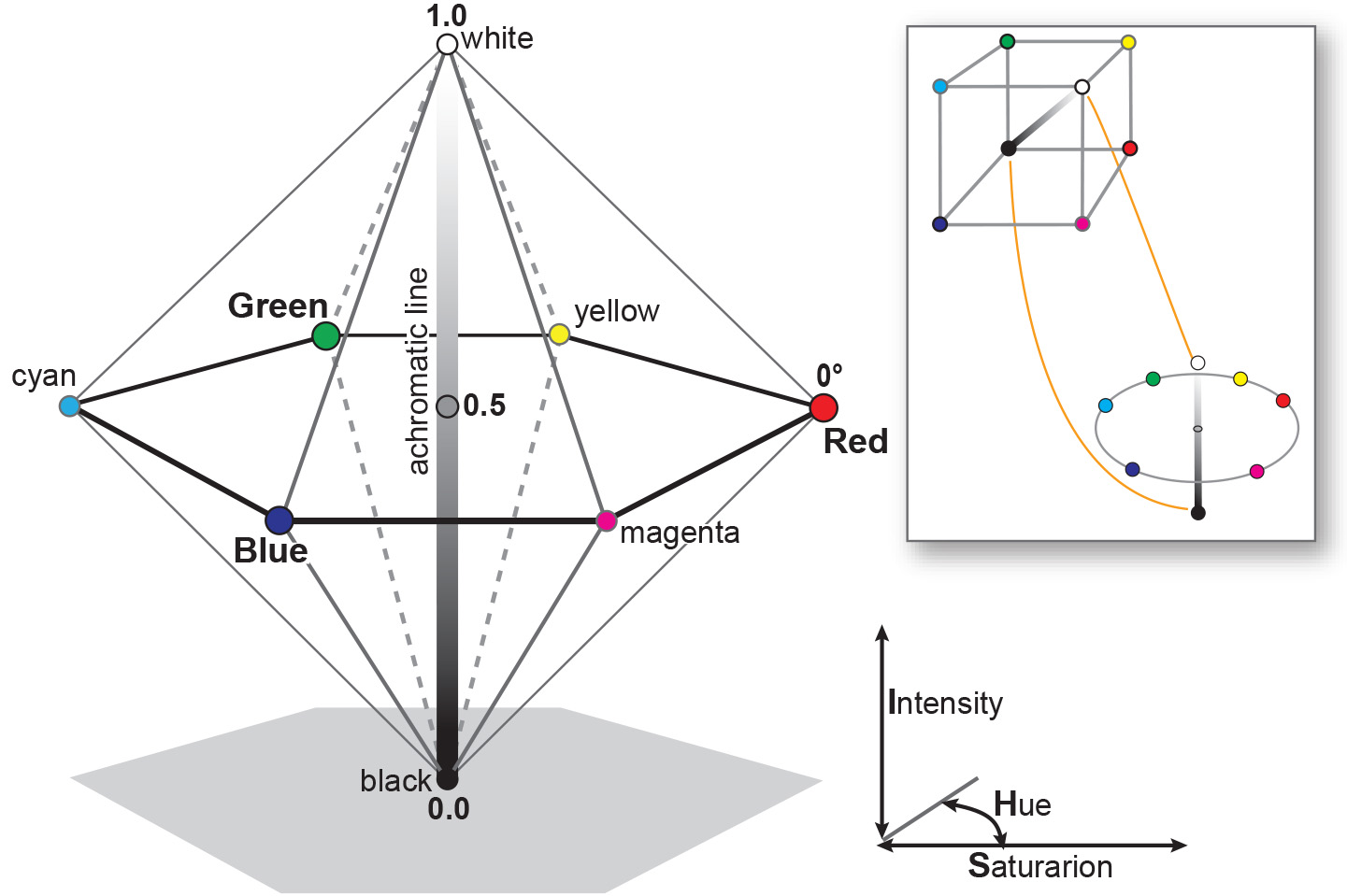IHS
Introduction
In day-to-day speech, we do not express colours using the RGB model. The Intensity-Hue-Saturation (IHS) model more naturally reflects our perception of colour.
Explanation
Intensity in the colour space describes whether a colour is dark or light and we use for intensity the value range 0 to 1 (projection on the achromatic diagonal). Hue refers to the names that we give to colours: red, green, yellow, orange, purple, etc. We quantify hue by degrees in the range 0 to 360 around the achromatic line. Saturation describes a colour in terms of purity and we quantify it as the distance from the achromatic line. “Vivid” and “dull” are examples of common words in the English language that are used to describe colour of high and low saturation, respectively. A neutral grey has zero saturation. As is the case for the RGB system, again three values are sufficient to describe any colour.

The Figure above illustrates the correspondence between the RGB and the IHS models. The IHS colour space cannot easily be transformed to the RGB space because they are completely different. The cube in Figure above must be converted to a double cone; the inset in the Figure illustrates this. Although the mathematical model for this description is tricky, the description itself is natural. For example, “light, pale red” is easier to imagine than “a lot of red with considerable amounts of green and blue”. The result, however, is the same. Since the IHS model deals with colour perception, which is somewhat subjective, complete agreement of the definitions does not exist. Important for image fusion is the calculation of intensity values and, luckily, this is the simplest of all the calculations. Be aware that the values in the RGB model actually range from 0 to 255, while in the IHS model, intensity ranges from 0 to 1. The formula for intensity is:
an orthogonal projection on the achromatic line. For example: (R, G, B) = (150, 200, 100). I = ((150 + 200 + 100) ∕ (3 ⋅ 255)) = 0.59.
Prior knowledge
Outgoing relations
- IHS is a kind of Colour space
- IHS is related to Tri-stimuli theory
- IHS is used by Pseudo colour